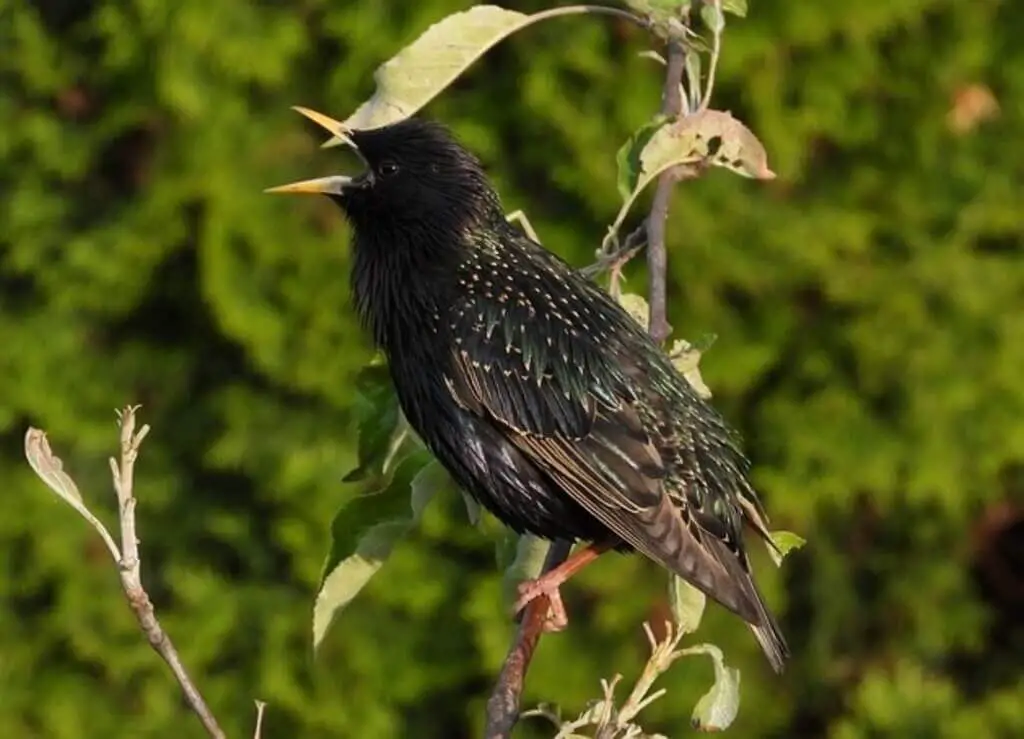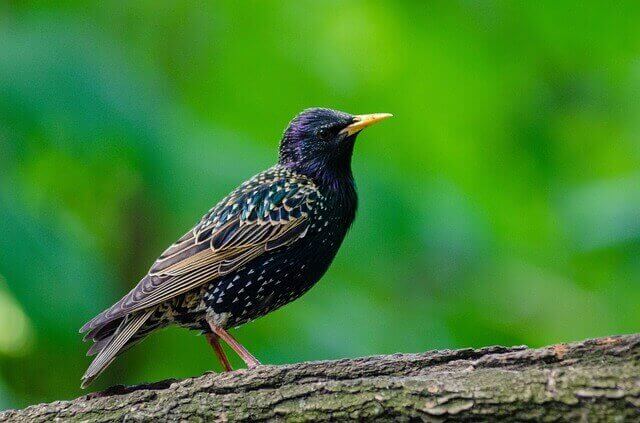Do you ever hear a car alarm and think to yourself, “Wait, is that a bird?” If so, you’re not alone. There are actually quite a few birds that sound like car alarms. In this comprehensive guide, we’ll show you 15 different birds that fit this description, complete with photos and identification information. So next time you hear a car alarm, take a closer listen – it just might be one of these fascinating feathered creatures!
Table of Contents
Birds That Sound Like Car Alarms
Northern Mockingbird
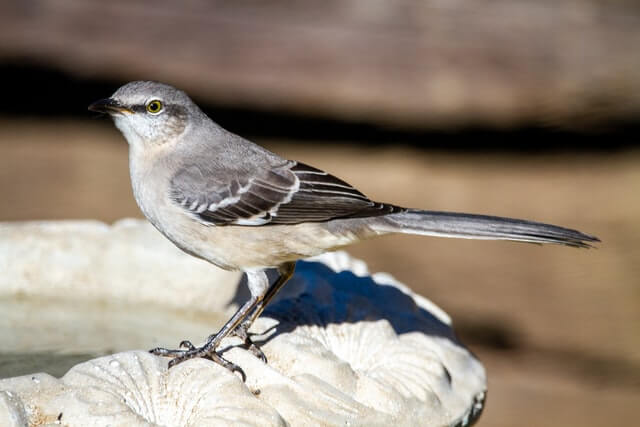
- Length: 8.3-10.2 in (21-26 cm)
- Weight: 1.6-2.0 oz (45-58 g)
- Wingspan: 12.2-13.8 in (31-35 cm)
- Map: Range Map
- Sounds: Calls and Songs
Northern Mockingbirds are a species of bird that is native to the United States. These birds are known to mimic the sound of a car alarms. This ability is common in mockingbirds, but this species of bird has the unique characteristic of being able to reproduce sound at any pitch and for any duration.
Mockingbirds are intelligent birds that use their sounds to communicate with other members of their species, warn potential predators about an upcoming attack, and provide a signal when a new flock member joins them.
Related:
Gray Catbird
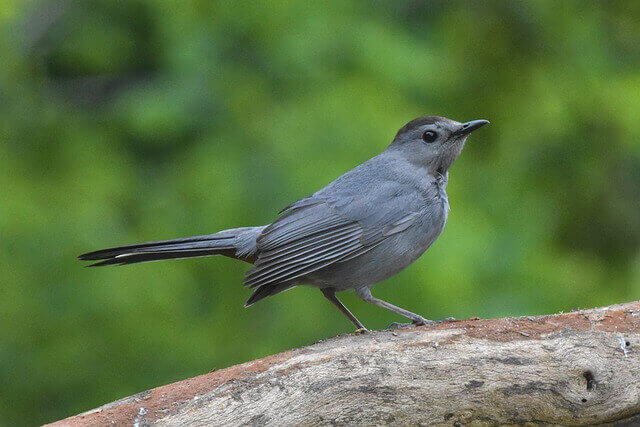
- Length: 8.3-9.4 in (21-24 cm)
- Weight: 0.8-2.0 oz (23.2-56.5 g)
- Wingspan: 8.7-11.8 in (22-30 cm)
- Map: Range Map
- Sounds: Calls and Songs
Gray Catbirds are a type of songbird that live in North America. They belong to the same family as mockingbirds and thrashers, but they have some unique features, including their distinctive cat-like call.
Gray Catbirds have been known to be able to mimic car alarms, sirens, and even human speech patterns like crying babies or laughter. In some cases, they use these calls as a way of luring prey in close so that it can be captured more easily.
Blue Jay

- Length: 9.8-11.8 in (25-30 cm)
- Weight: 2.5-3.5 oz (70-100 g)
- Wingspan: 13.4-16.9 in (34-43 cm)
- Map: Range Map
- Sounds: Calls and Songs
A blue jay has the ability to mimic sounds, including car alarms. The Blue Jay is a North American bird, that is known for its remarkable song as well as mimicking other birds or animals.
There are different types of calls that a blue jay can produce such as harsh sounding caws, clicks and soft whistles. They will typically imitate another sound when they want to mate, territorial disputes or to keep predators away.
Related:
- How to Attract Blue Jays to your Yard?
- Do Blue Jays Migrate? The Truth
- What do Blue Jay Eat – All The Facts
- 15 Best Bird Feeders for Blue Jays
Eurasian Jay
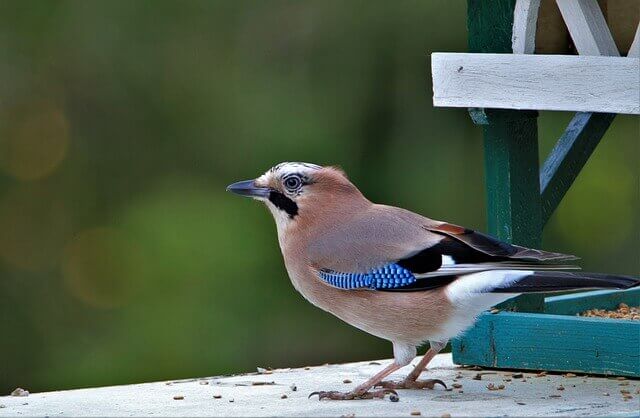
Length: 13.0-14.0″ in (33-35.7 cm)
Weight: 6.0 oz (170 g)
Wingspan: 20-23″ in (52-58 cm)
Map: Range Map
Sounds: Calls and Songs
The Eurasian Jay is a large passerine bird that is found in forests across Eurasia. The birds can mimic the sound of a car alarm, and they have even been known to mimic other sounds, such as an electric drill or chainsaw. It starts by making an ascending call, then moves to lower notes before finishing with a descending “A-oo.”
This alarm sound lasts for about four seconds and has three phases. The Eurasian Jay’s range of sounds includes more than just alarms. They also make vocalizations such as screams, caws, chatters, and other whistles.
Steller’s Jay
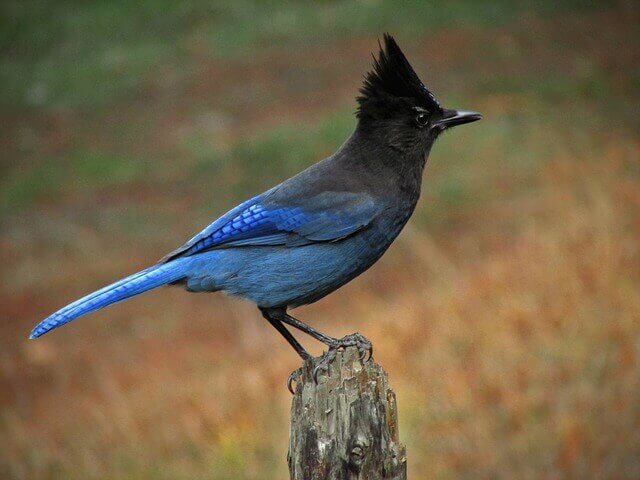
- Length: 11.8-13.4 in (30-34 cm)
- Weight: 3.5-4.9 oz (100-140 g)
- Wingspan: 17.3 in (44 cm)
- Map: Range Map
- Sounds: Calls and Songs
The Steller’s Jay, is a bird native to the Western US and parts of Canada, is known for its ability to mimic alarm sounds. These birds are also called “the noisy jay” because they make a variety of loud noises. One particular noise that Steller’s Jays can mimic is an ambulance siren.
The reason why these birds imitate this sound is not clear, but some scientists think it might be because of their natural habitat near areas with roads, which may have caused them to learn these sounds.
Related: How to Attract Steller’s Jays to your yard?
Northern Cardinal
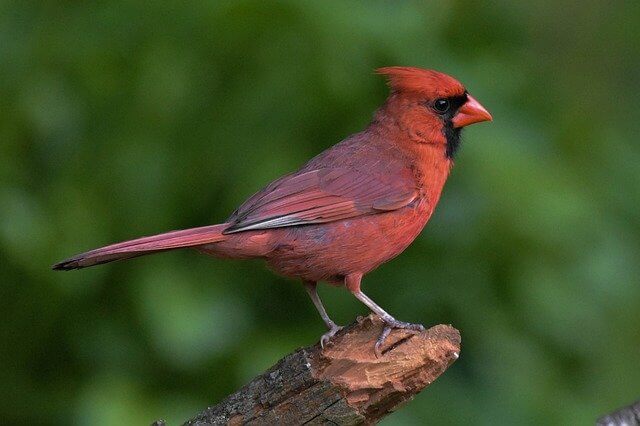
- Length: 8.3-9.1 in (21-23 cm)
- Weight: 1.5-1.7 oz (42-48 g)
- Wingspan: 9.8-12.2 in (25-31 cm)
- Map: Range Map
- Sounds: Calls and Songs
This bird species is found in the eastern United States, and it makes a lot of different noises. Some of these include squawking, growling, and cooing sounds that they use to get attention from their parents or mates.
The cardinal also mimics other animals by making chirping sounds for example which could be warning signs or distress calls. These birds are able to imitate some alarm sounds as well, such as fire alarms, car alarms, and smoke alarms.
Related:
- Where are Cardinal Birds Found – Best Places to Look
- Cardinal Bird Facts You Never Knew
- 10 Best Bird Feeders for Cardinals
American Crow
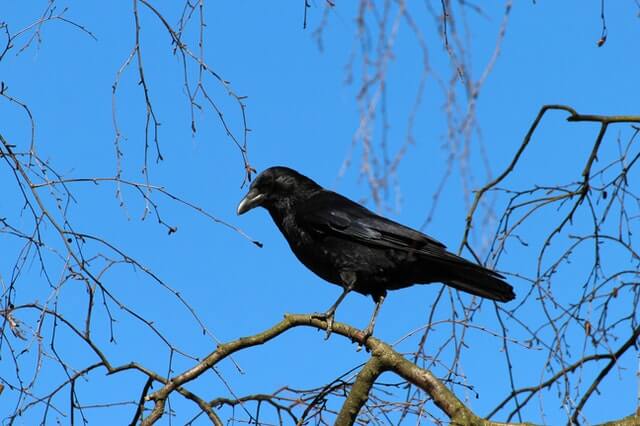
Length: 8.3-10.2 in (21-26 cm)
Weight: 1.6-2.0 oz (45-58 g)
Wingspan: 12.2-13.8 in (31-35 cm)
Map: Range Map
Sounds: Calls and Songs
American Crows are some of the most common birds in North America. They have excellent memories and can recall where they had stored their food, as well as who was watching them when they did so. Crows are an amazing animal that can mimic sounds and even the alarm calls of other animals.
They have been known to mimic everything from chainsaws, owls, sirens, police cars and more. Furthermore, they use this ability to scare off other animals and predators.
Related:
Common Grackle
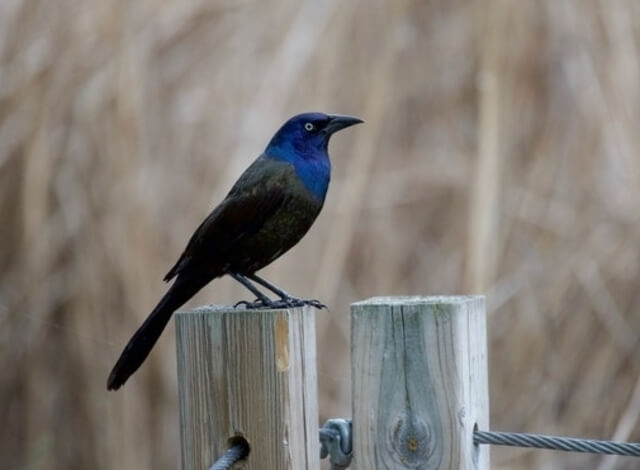
- Length: 11.0-13.4 in (28-34 cm)
- Weight: 2.6-5.0 oz (74-142 g)
- Wingspan: 14.2-18.1 in (36-46 cm)
- Map: Range Map
- Sounds: Calls and Songs
Common Grackles can be found in the United States, Mexico, Central America, and South America. These large black birds are not just loud, they can imitate sounds.
Common Grackles have a sophisticated and complex vocal repertoire including songs, imitations of other species’ calls, alarm calls, distress calls and chatter. This means that these birds can communicate with one another about different dangers in their environment.
Brown Thrasher
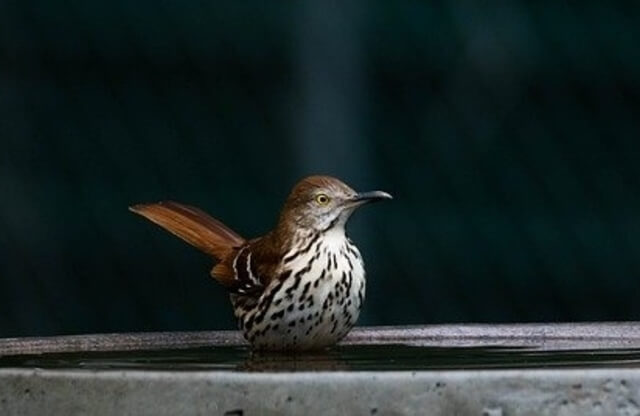
- Length: 9.1-11.8 in (23-30 cm)
- Weight: 2.1-3.1 oz (61-89 g)
- Wingspan: 11.4-12.6 in (29-32 cm)
- Map: Range Map
- Sounds: Calls and Songs
The Brown Thrasher is a songbird that is found in the eastern United States. It has a loud, ringing call and sings on its territory during breeding season. They have a variety of song styles, including raspy buzzes, whistles, and liquid trills.
The bird imitates other birds as well as other sounds like cats, dogs, crows, owls, alarm sounds and even making mechanical noises. The brown thrasher’s ability to imitate these sounds makes it an important skill for their survival.
European Starling
- Length: 7.9-9.1 in (20-23 cm)
- Weight: 2.1-3.4 oz (60-96 g)
- Wingspan: 12.2-15.8 in (31-40 cm)
- Map: Range Map
- Sounds: Calls and Songs
The European Starling is a small bird that can be found in Europe, Asia and North Africa. In order to imitate other sounds, the starling has an enlarged syrinx or voice box in its throat which allows it to create a wide range of sound frequencies.
The main vocalizations include chirps, whistles, warbles and clicks with some variations depending on the species they are trying to imitate. The European Starling not only imitates other birds but also many other sounds like car alarms and ambulance sirens.
Related: How To Attract European Starlings To Your Yard Fast?
Marsh Warbler
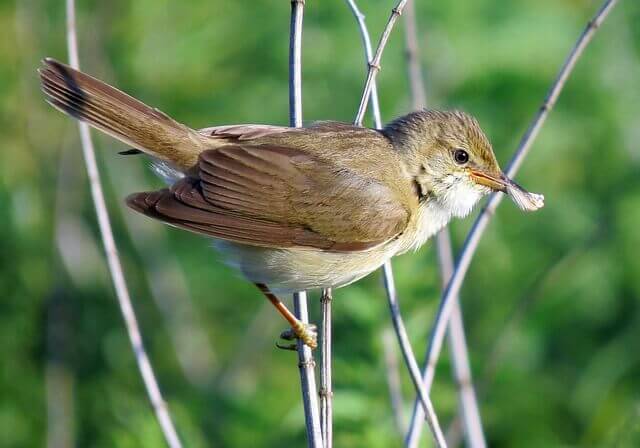
Length: 4.9-5.3″ in (12-13 cm)
Weight: 0.5 oz (13 g)
Wingspan: 7.5-8.3 in (19-21 cm)
Map: Range Map
Sounds: Calls and Songs
The Marsh Warbler is a small, sparrow-sized bird that can be found in the southern United States. They live in marshy areas near water such as creeks, streams, or ponds.
These birds have an amazing ability to imitate many sounds including mammals such as coyotes and frogs, water droplets dripping into pools of water, rain falling on leaves and even insects buzzing. This complex vocal repertoire allows the bird to not only survive but thrive in their harsh environment.
Song Thrush
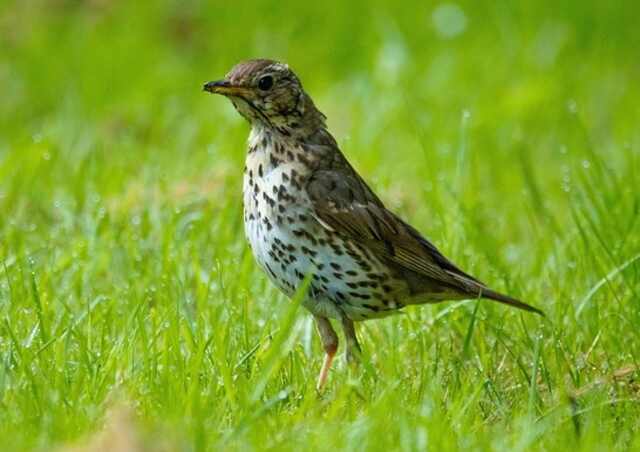
- Length: 7.75-9.25″ in. (20-23.5 cm)
- Weight: 1.75-3.75 oz. (65-100g)
- Wingspan: 13.0-14.2″ in. (33-36 cm)
- Map: Range Map
- Sounds: Calls and Songs
Song Thrushes (Turdus philomelos) are a species of migratory passerine bird found in many regions of the world. They inhabit a range that spans across Europe, Asia and Africa, with some populations having spread to North America. These birds can be found in dense woodlands and open areas such as fields or meadows, where they feed on a variety of things including invertebrates, berries and grains.
The Song Thrush is well known for its ability to imitate sounds from its environment – an impressive feat which makes it stand out among other birds. It is capable of replicating the calls of other species as well as man-made noises like car alarms and even musical instruments!
Common Blackbird
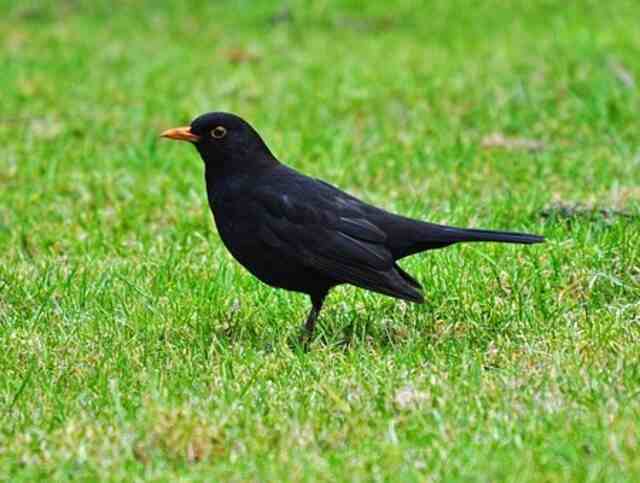
- Length: 8.3-9.8 in (21-25 cm)
- Weight: 2.1-3.0 oz (60-86 g)
- Wingspan: 14.6 in (37 cm)
- Maps: Range Map
- Sounds: Calls and Songs
The Common Blackbird (Turdus merula) also called the Eurasian Blackbird is a species of thrush native to Europe, Asia and parts of Africa. It has a wide range across the Old World and is found in woodlands, fields, gardens and parks. This species is easily recognized by its black plumage with a bright yellow bill. This species feeds mainly on earthworms but also consumes insects, various fruits and berries.
It can often be seen searching for food on the ground or perched near shrubs looking for small invertebrates. The Common Blackbird has an impressive repertoire of songs that it regularly sings throughout the year; they are particularly active during mating season, when they become even more vocal with their singing abilities.
Common Myna
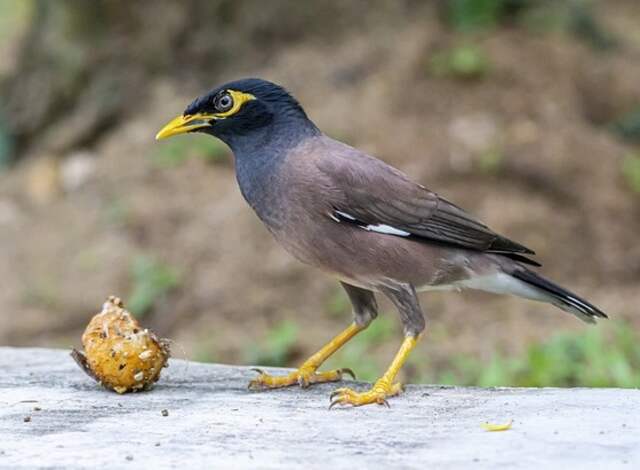
- Length: 9.1-10.2 in (23.1-26.0 cm)
- Weight: 2.9 to 5.0 oz. (82.2-141.7 g)
- Wingspan: 18.0 in (45.7 cm)
- Maps: Range Map
- Sounds: Calls and Songs
The Common Myna also called the Indian Myna, is a species of bird native to South Asia and parts of Southeast Asia. It can be found in open woodlands, grasslands, urban areas, agricultural sites and forests. This species has adapted well to human habitation and can now be found across many countries in the world.
The Common Myna is an omnivorous bird that mainly eats fruits and insects such as caterpillars, beetles, locusts and grasshoppers. They also feed on grain from crops such as wheat or barley. Its diet is supplemented with small birds eggs and other small vertebrates. Being highly intelligent birds, they are able to imitate human speech as well as the calls of other birds and animals.
Common Raven
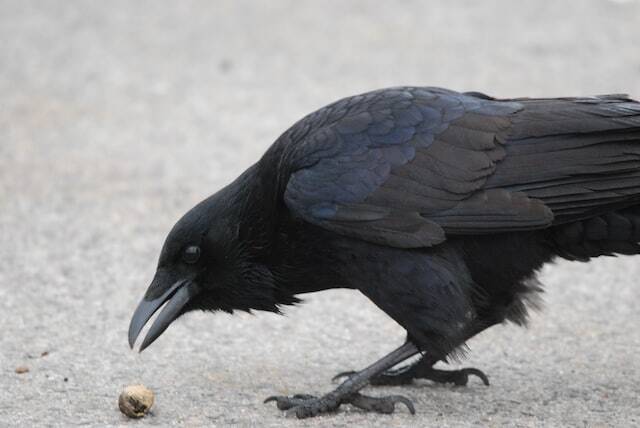
- Length: 22.1-27.2 in (56-69 cm)
- Weight: 24.3-57.3 oz (689-1625 g)
- Wingspan: 45.7-46.5 in (116-118 cm)
- Maps: Range Map
- Sounds: Call and Songs
The Common Raven, Corvus corax, is a large and striking bird that is found across much of the Northern Hemisphere. It’s one of the most wide-reaching birds in the world, with a range extending from parts of Alaska and northern Canada all the way down to Mexico. This species can be seen in a variety of habitats, including forest edges, open grasslands, deserts and even near towns and cities.
The Raven is an opportunistic feeder and eats just about anything it can get its beak on – from insects to small mammals to carrion. It will also scavenge human garbage when available. Perhaps most remarkable about this species is its ability to mimic sounds – it has been known to imitate wolves howls or even copy other birds’ calls! Its loud croaking ‘caw’ call makes it easily recognizable, though.
Related Post: Why Do Birds Imitate Sounds? The Truth Finally Revealed!

